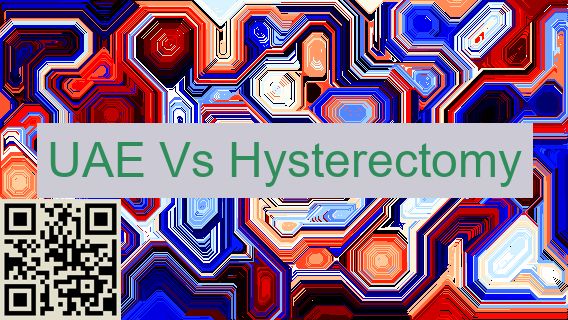UAE Vs Hysterectomy
Uterine artery embolization (UAE) and hysterectomy are both surgical procedures that can treat fibroids and other uterine conditions. However, they are very different procedures with varying levels of effectiveness and different risks. Here, we will compare the two procedures to help you decide which is best for your particular situation.
UAE is a minimally invasive procedure that can be done on an outpatient basis under local anesthesia. It is an alternative to hysterectomy for treating fibroids and other uterine conditions. During UAE, a catheter is inserted into the femoral artery in the groin and guided to the uterine artery using radiographic imaging. Once the catheter is in place, tiny particles are injected into the uterine artery, cutting off the blood supply to the fibroids and causing them to shrink. Once the fibroids have shrunk, they can typically be removed without the need for a hysterectomy.
Hysterectomy, on the other hand, is a major surgical procedure that involves the removal of the uterus. It is typically done under general anesthesia and requires a hospital stay of several days. Hysterectomy is the most common treatment for fibroids and other uterine conditions. It is a very effective treatment, but it is also very invasive and can have long-term side effects, such as loss of fertility, increased risk of urinary incontinence, and increased risk of pelvic organ prolapse.

When deciding between UAE and hysterectomy, it is important to consider both the effectiveness and the risks of each procedure.
In terms of effectiveness, UAE is usually effective in reducing the size of fibroids and relieving symptoms such as heavy menstrual bleeding and pelvic pain. However, it is not as effective as hysterectomy in treating other uterine conditions, such as uterine cancer or endometriosis.
In terms of risks, UAE is considered to be a relatively safe procedure with few side effects. The most common side effects are pain during the procedure, pelvic pain and cramping after the procedure, and spotting or bleeding after the procedure. Hysterectomy, on the other hand, is a major surgical procedure with more risks and potential complications, including infection, bleeding, and damage to surrounding organs.
When deciding between UAE and a hysterectomy, it is important to consider the effectiveness of each procedure, the risks of each procedure, and your individual needs and preferences. If you are considering UAE, it is important to consult with your doctor to ensure that it is the right choice for you.

Finally
It is a very effective treatment, but it is also very invasive and can have long-term side effects, such as loss of fertility, increased risk of urinary incontinence, and increased risk of pelvic organ prolapse. Hysterectomy, on the other hand, is a major surgical procedure with more risks and potential complications, including infection, bleeding, and damage to surrounding organs. When deciding between UAE and hysterectomy, it is important to consider the effectiveness of each procedure, the risks of each procedure, and your individual needs and preferences.
#effective #fibroid_tumor #risk #effectiveness #uae #conditions #artery #potency #routine #hazard #weather #surgical #fibroids #procedure #uterine #condition #riskseffective #operation #hysterectomy #procedures




Thank you so much for the helpful information on UAE re Hysterectomy